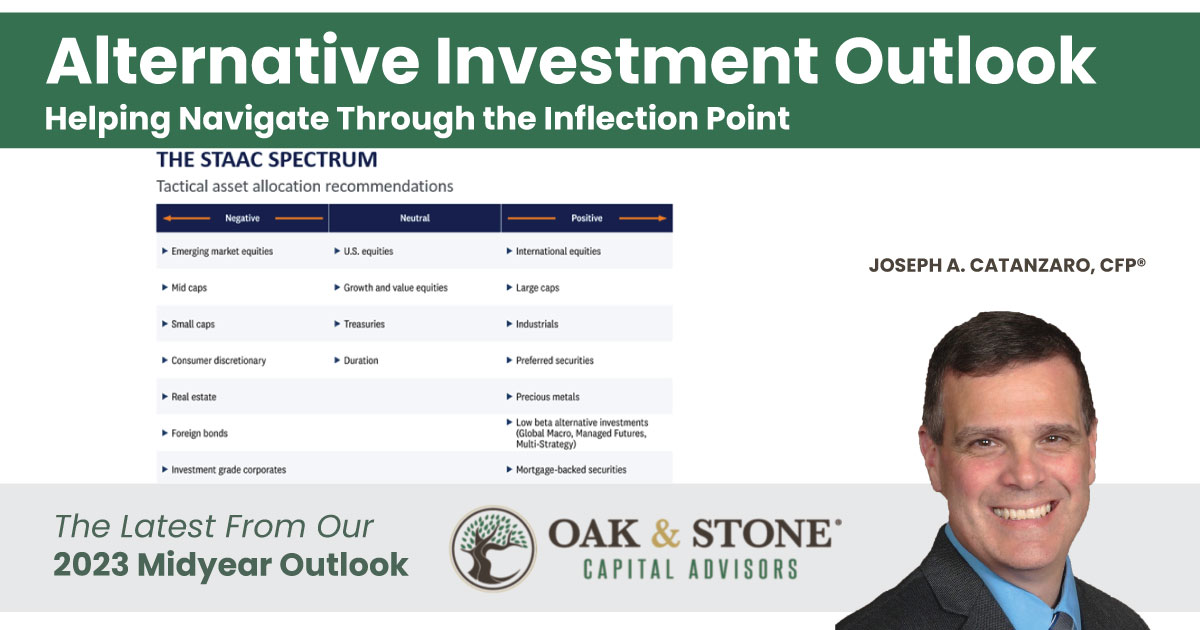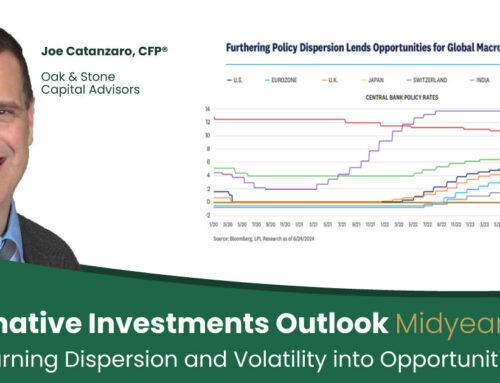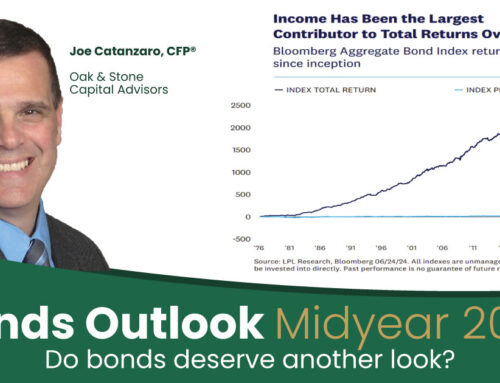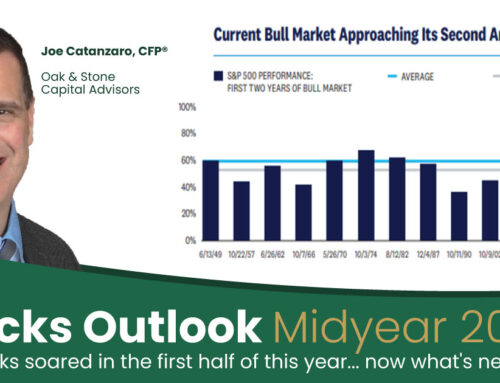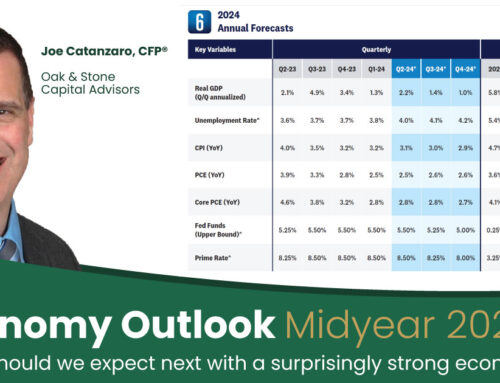The first half of 2023 was a meaningful period in many aspects after a difficult year in 2022. Global inflation figures finally started to come down, economic activity started showing early signs of slowing, and the Fed moderated its hiking steps while remaining hawkish. We believe most central banks are at the final stages of rate hikes or even at the beginning point of easing (e.g., China) as their focus moves from inflation to recession. That said, the timing and the steps they will take after the shift are greatly data dependent, leaving the market with many uncertainties. This, combined with the lagged impact of rate hikes which will become more apparent down the road, may keep market volatility at an elevated level with many twists and turns, and dispersion will likely continue across the asset classes, sectors, and quality of the assets.
With this in mind, we remain constructive on alternative investments, which can provide a source of alpha that is uncorrelated to the traditional market, downside management, and diversification for investors’ portfolios. We, however, also want to note that greater dispersion of performance is expected among managers depending on their trading style, sector, or geographical focus, even within each strategy group, given the macro backdrop. Therefore, understanding the characteristics of an underlying strategy, including the opportunity set as well as risks, will be more critical than in recent years.
Overall, we expect tactical, unconstrained, alpha focused managers in the hedge fund category, as well as private markets strategies that focus on high quality assets, to deliver solid results in the current environment.
Within the hedge fund category, we are particularly constructive on well-diversified and tactical managers which can position themselves around the market inflection points, benefit from increased volatility, and structure trades for asymmetric upside/downside capture. In this regard, we are positive on global macro managers who can take advantage of robust rates and currency trading opportunities arising from active central banks that are in different phases of the policy cycle. A selective set of systematic strategies that can take advantage of volatility could provide strong diversification benefits in a potentially challenging market environment. Lastly, high quality multi-strategy categories may warrant consideration in investors’ portfolios, as each of them offers value that is more than the sum of its parts through its own strategic capital re-allocation and risk management.
Within the private markets category, we expect private credits and infrastructure categories to potentially continue to deliver performance as yield alternatives. These managers should be able to strike solid terms to help generate attractive yields and weather potential market volatility. The yields for senior secured loans are at an attractive level, potentially alleviating the need to leverage or lower the quality of loans. For infrastructure, its resilient nature during market downturns, along with the secular demand on digitalization and decarbonization backed by policy tailwinds should be appreciated.
In addition to the aforementioned strategies, distressed/special situation opportunities may arise towards the later part of the year or in early 2024 that could lend rich trading opportunities for relevant hedge funds as well as private market players.

